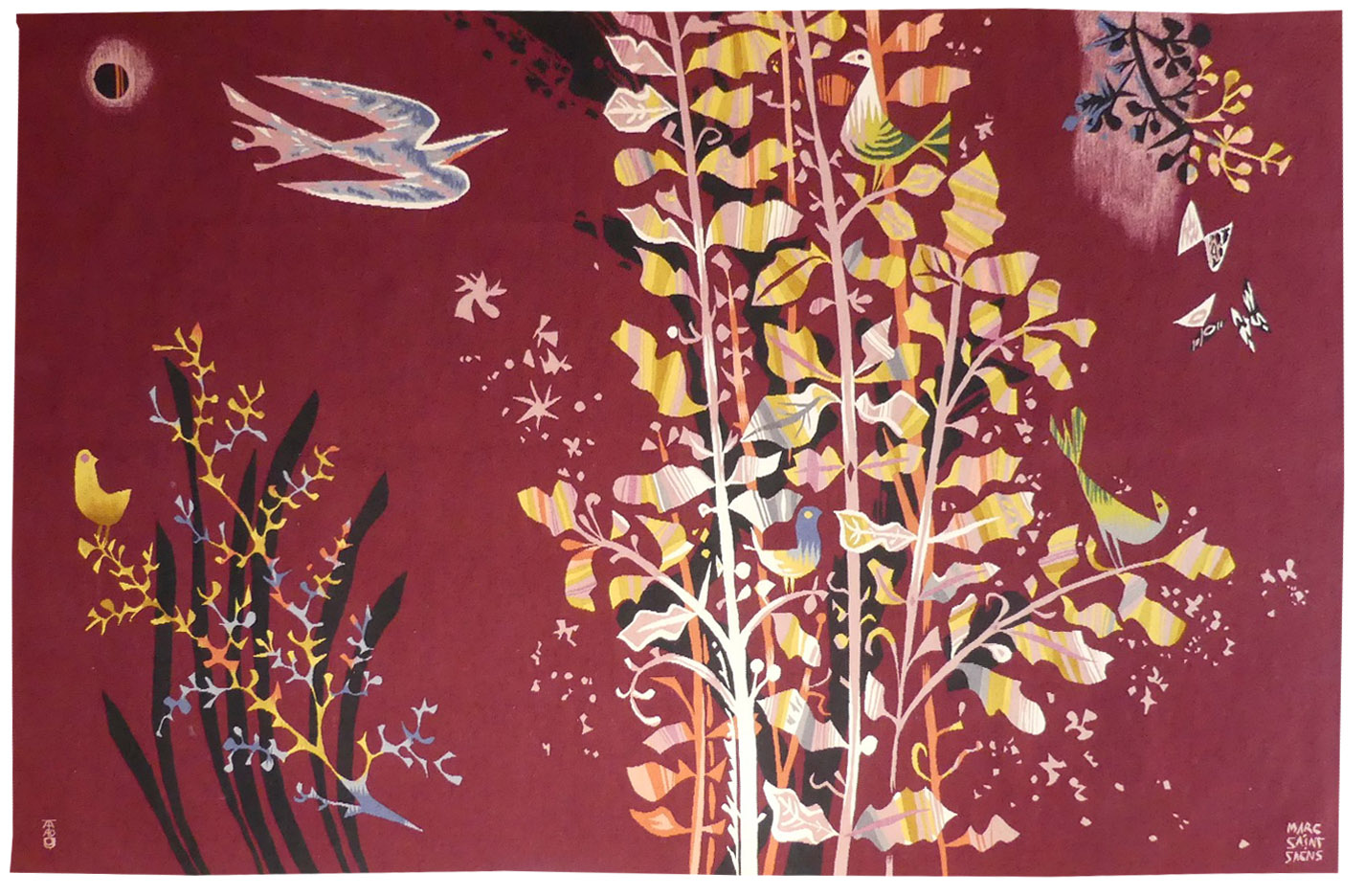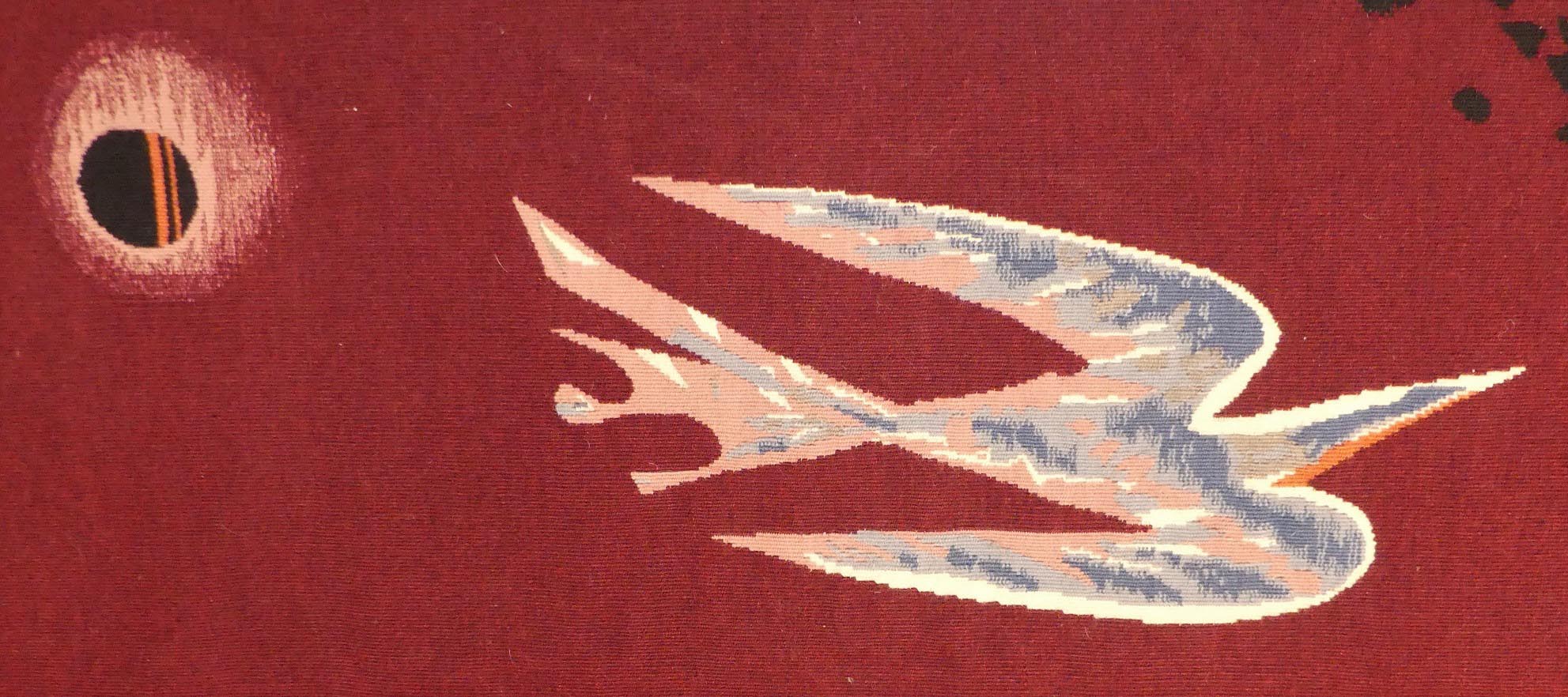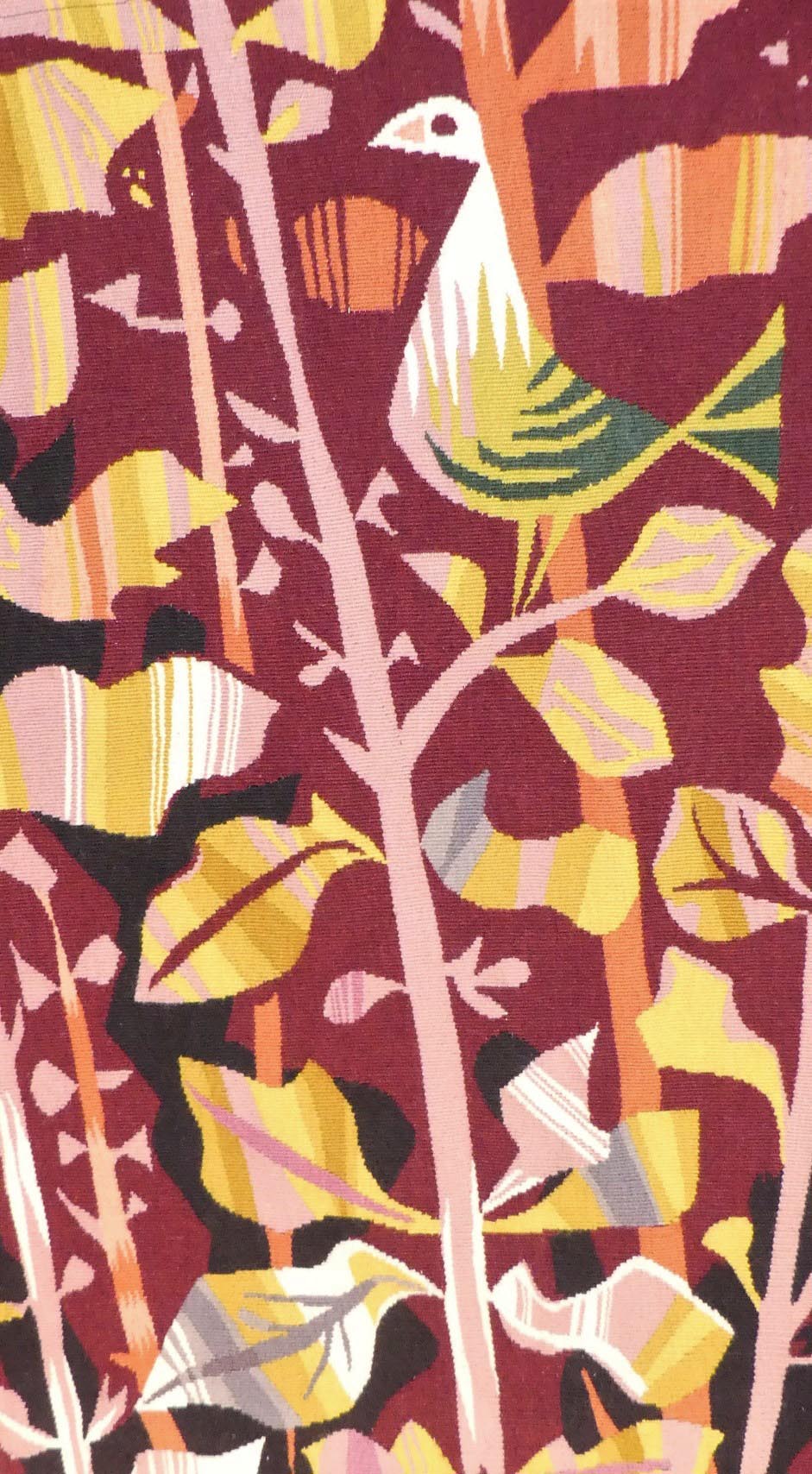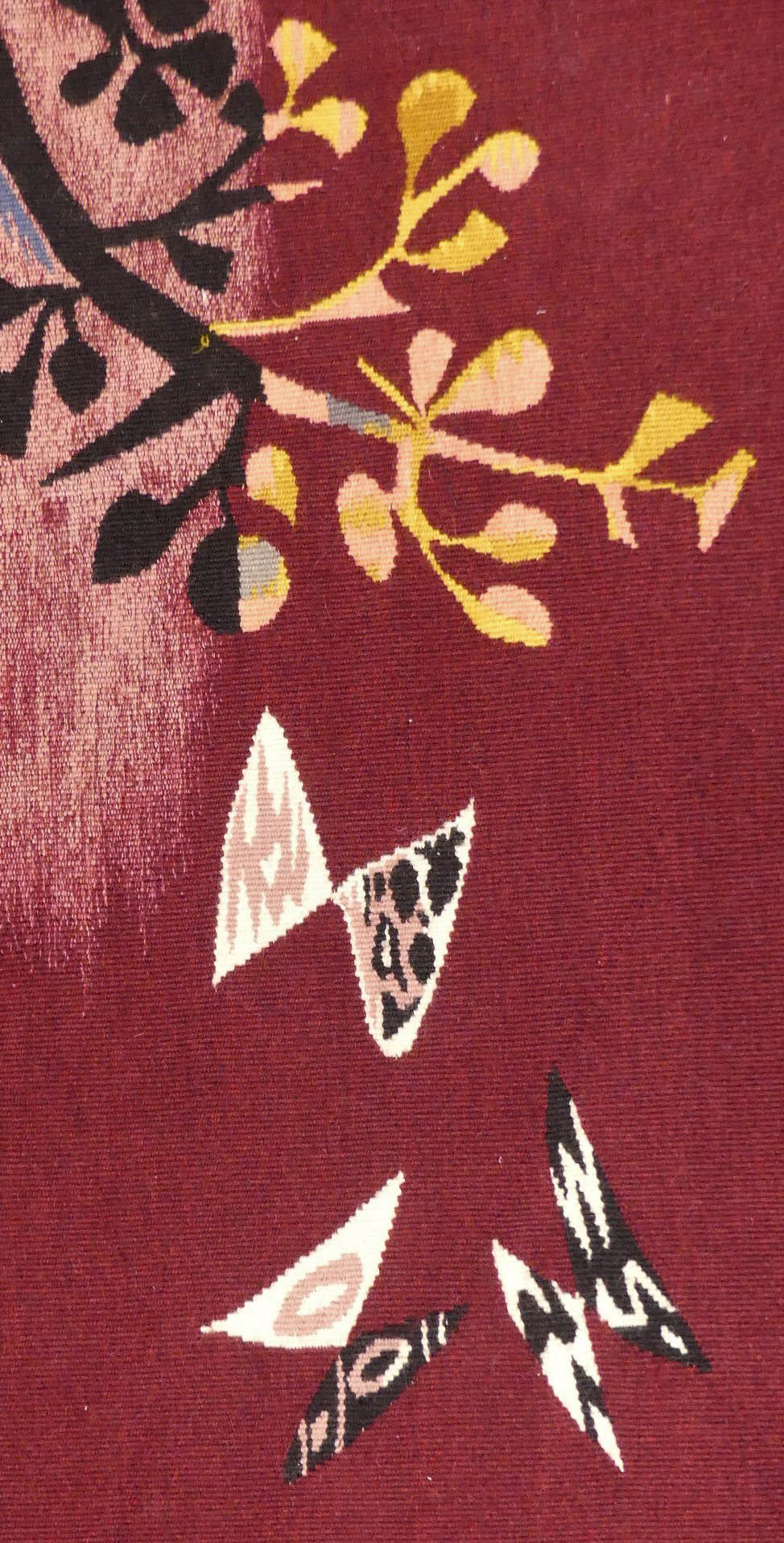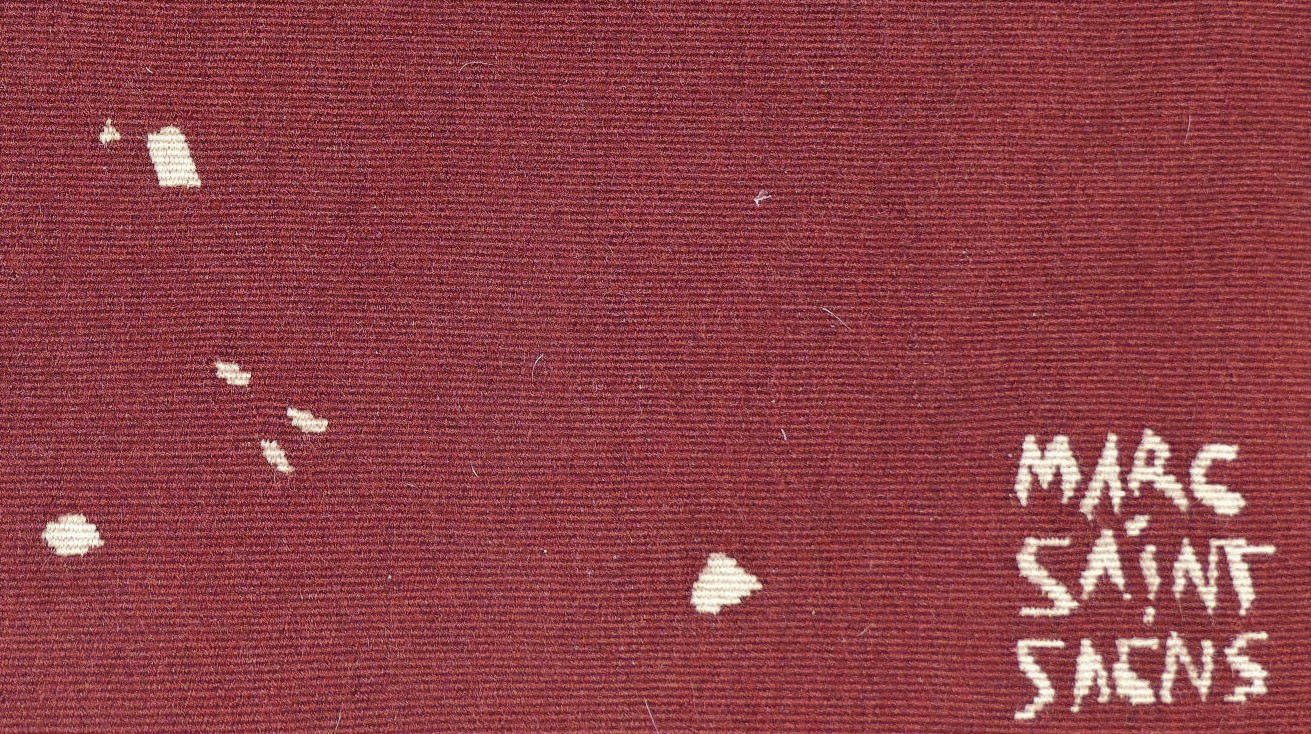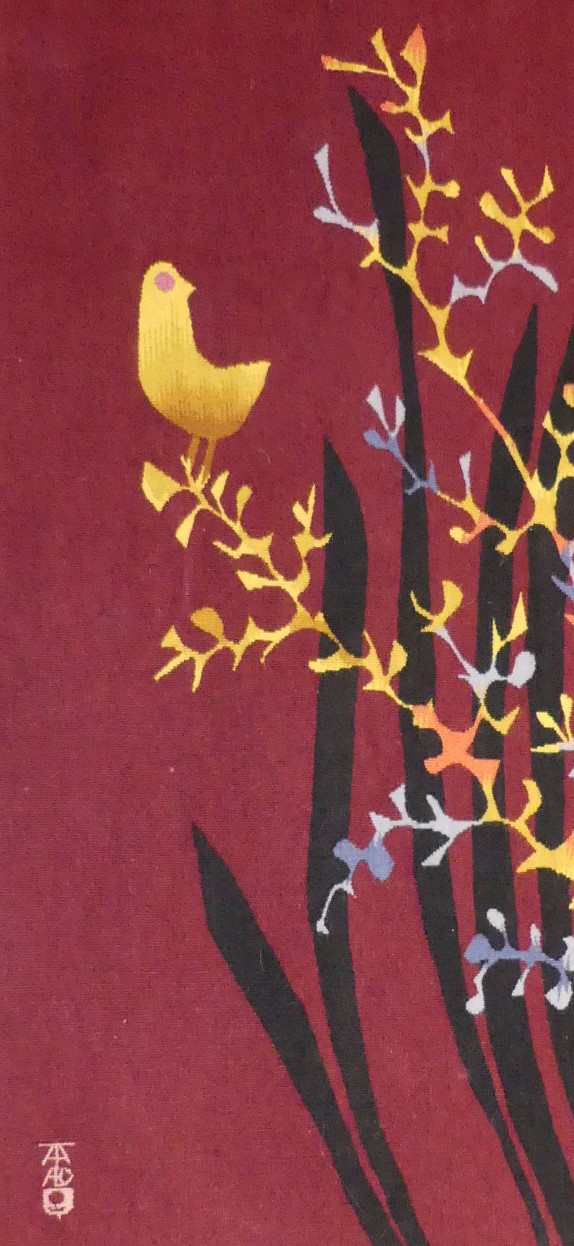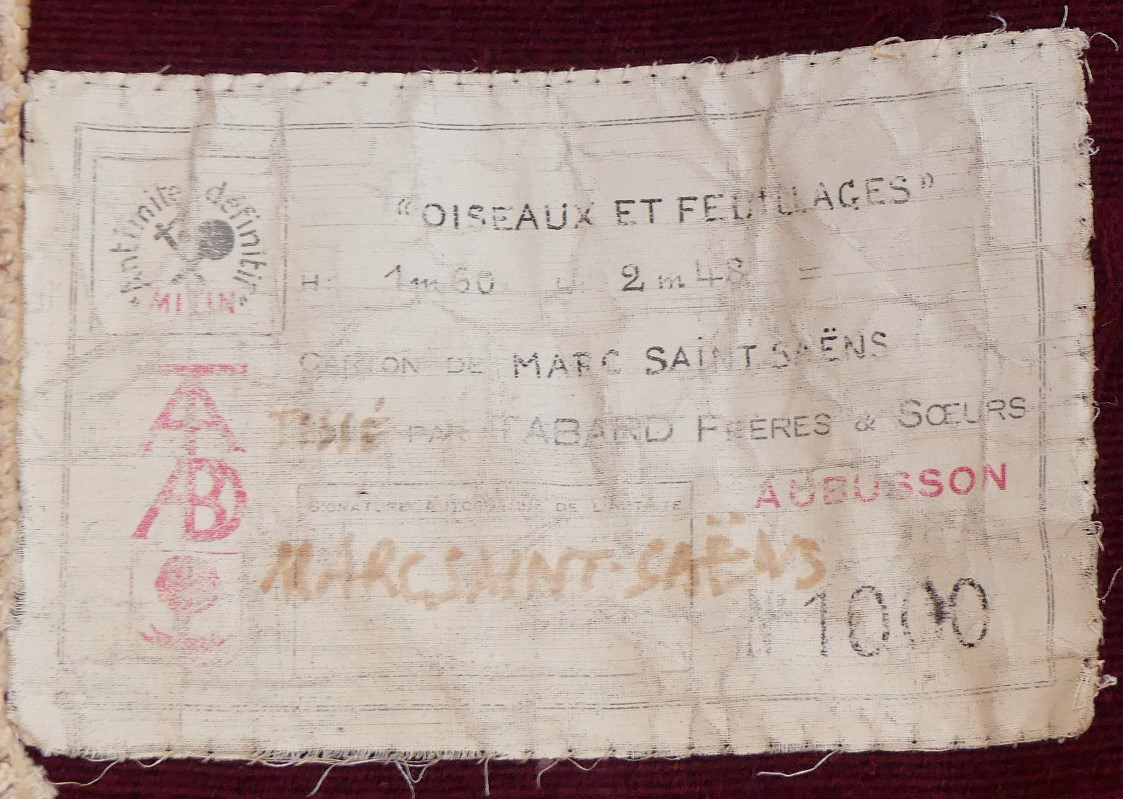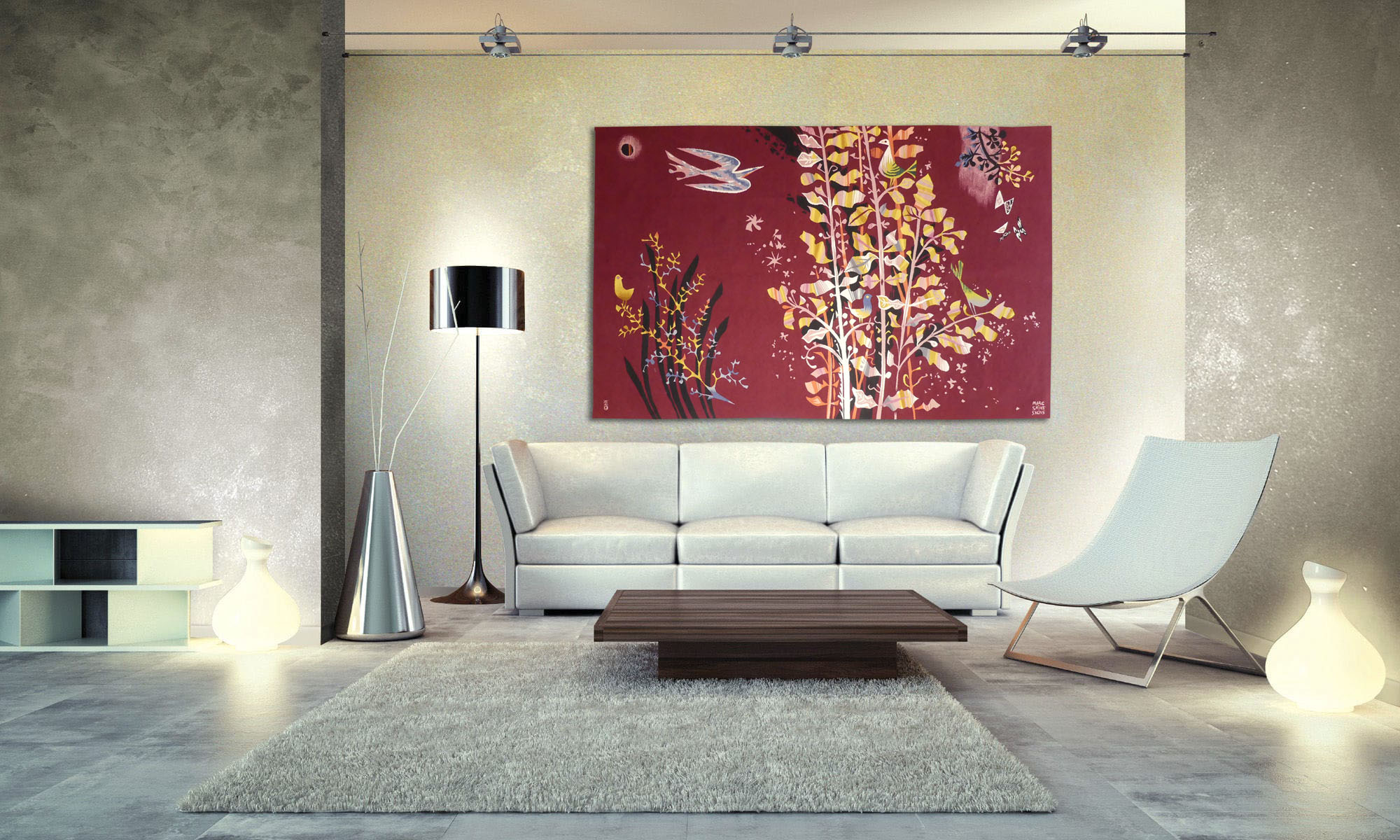Oiseaux et feuillages
Tapisserie d’Aubusson tissée par l’atelier Tabard.
Avec son bolduc signé de l’artiste.
1961.
Lurçat sollicite Saint-Saëns, d’abord fresquiste, dès 1940. Et, pendant la guerre, celui-ci produit ses premiers chefs d’oeuvre allégoriques, tapisseries d’indignation, de combat, de résistance : “les Vierges folles”, “Thésée et le Minotaure”. A l’issue de la guerre, tout naturellement, il rejoint Lurçat dont il partage les convictions (sur le carton numéroté et les tons comptés, sur l’écriture spécifique que requiert la tapisserie,…) au sein de l’A.P.C.T. (Association des Peintres-cartonniers de Tapisserie). Son univers, où la figure humaine, étirée, allongée, tient une place considérable (comparée notamment à la place qu’elle occupe chez ses confrères Lurçat, ou Picart le Doux), tourne autours de thèmes traditionnels : la femme, la Commedia dell’arte, les mythes grecs,…, sublimés par l’éclat des coloris et la simplification de la mise en page. Il évoluera ensuite, dans les années 60 vers des cartons plus lyriques, presque abstraits, où dominent éléments et forces cosmiques.
« [Ce carton] fut un succès (7 exemplaires) et il y a 2 versions : l’une à fond bordeaux, l’autre à fond noir. Une fois encore Saint-Saëns fait référence à la grande tradition des verdures peuplées d’animaux et de fleurs, art de délassement sans prétention…. » (Michèle Heng dans Cat. Expo. Saint-Saëns, oeuvre tissé, Aubusson, Musée départemental de la Tapisserie, 1987, p.34)
Bibliographie :
Cat. Expo. Saint-Saëns, Paris, galerie La Demeure, 1970
Cat. Expo. Saint-Saëns, oeuvre tissé, Aubusson, Musée départemental de la Tapisserie, 1987
Cat. Expo. Marc Saint-Saëns, tapisseries, 1935-1979, Angers, Musée Jean Lurçat et de la Tapisserie Contemporaine, 1997-1998


